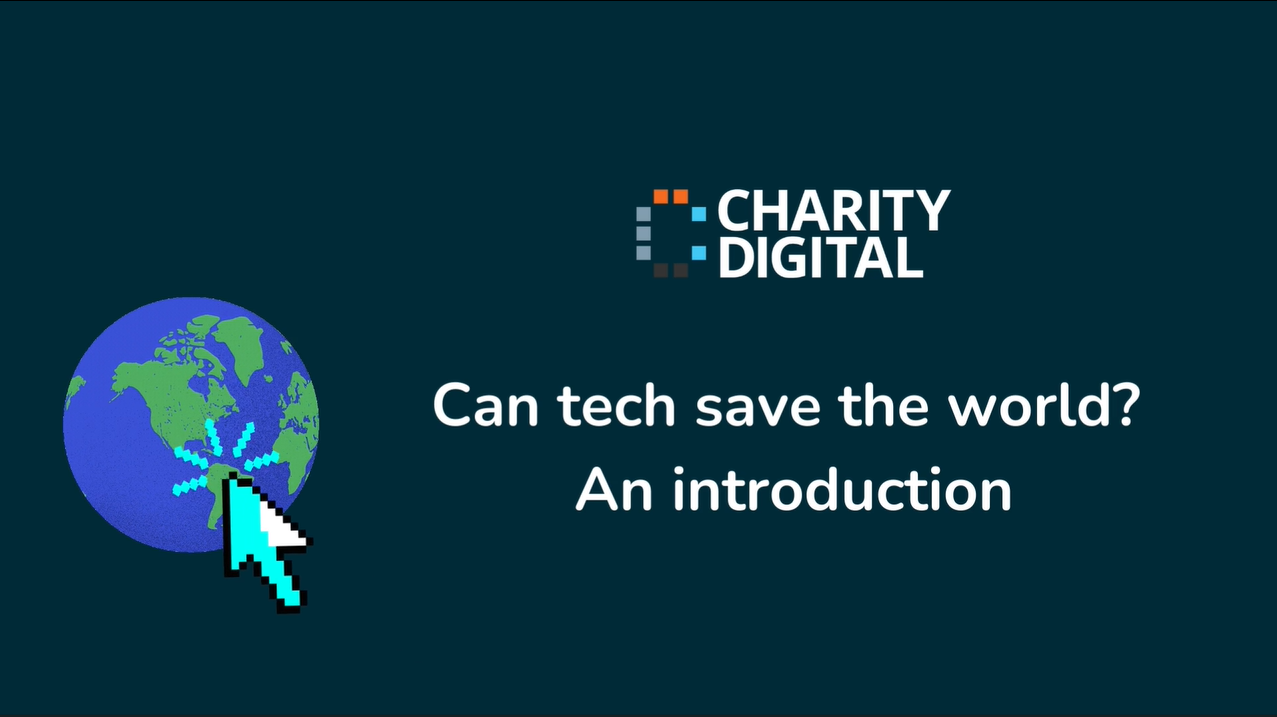Insights
INSIGHTS
All Topics
My Account
Upgrading your telephony with Microsoft Teams provides a strategic and sustainable solution
14 Oct 2020by Aidan Paterson
Expert guidance from Class Networks examines how charities can secure a sustainable remote working future in the event of a second lockdown
This article is sponsored by Class Networks - trusted experts in charity sector communications
2020 has seen a sea change in how charities operate – both in terms of internal processes, and how organisations interact with supporters, service users and donors. Whilst the process of digitisation has been one of the key topics in the sector for several years, the effects of COVID-19 (especially the national lockdown beginning in March) have served as a catalyst for transformation. Changes that would otherwise have occurred over several years, as the result of an iterative process instead took place overnight – as charities scrambled to make the switch to digital methods of fundraising, service delivery and day to day operations.
One of the most profound changes was the switch to remote working. Whilst some frontline service worker roles were unable to make the transition, remote working offered a safe alternative to traditional office-based routine for a majority of charity staff, including fundraisers, cybersecurity and IT staff, administrative workers, HR professionals and digital experts.
Whilst this transition to working from home has allowed organisations to continue delivery of vital services, it has also presented unique logistical challenges. Charity staff needed a way to integrate live chat and video conferencing capabilities with quick and easy file-sharing and collaboration tools. Charities found a range of solutions, but one of the most popular is Microsoft Teams.
Now that charities are several months into remote or hybrid working arrangements, it is a good time to assess what is working and what isn’t, as well as to build a digital infrastructure to guide your organisation through a potential second lockdown, and into the future.
One of the things that this experience made clear was that the existing telephone systems used by many charities do not enable remote working very effectively and are not fit for purpose in a remote working context.
A new working arrangement requires new tech
The majority of existing telephone systems have been designed to work well when staff are in an office. They were not designed with remote working in mind, and so they do not work well with a remote working work force.
Even charity leaders who are aware of this dichotomy may not know where to start. For organisations used to a more traditional phone set-up, increasing digitisation can be daunting. The technology may seem difficult to understand.
The good news is that there are a number of trusted experts who can help advise and guide you on your digitisation journey. The first thing to do is to identify the challenges facing your existing set-up.
Many charities operate helplines or other phone services. These may run 24 hours a day, in order to offer service users vital support. If an organisation is used to running these services from a central office, then transitioning to remote working can provide complex logistical challenges. Even organisations that have made this transition are likely to have done so on an ad hoc basis and may be facing obstacles that can be overcome with a more planned approach.
Some of the challenges identified by charities in the first lockdown included:
- VPN’s not working reliably
- Additional software licences required
- Change of telephony call routing plans constituting a manual and slow process
- Paying for call forwarding costs
- Security and safeguarding concerns around staff using personal devices to make calls
- The need to invest in additional hardware
- Challenges in integrating IT, telecoms, internet access & firewalls
What do charities need to be aware of?
Charities need to define their needs in business terms. You don’t need to be a technical expert to make decisions around digital telephony solutions.
There are solutions available that can work around the systems you already have in place. One such solution is Teams Voice. This innovative new product from voluntary sector communications experts, Class Networks, lets organisations make and receive external calls through the Microsoft Teams. This solution can take the place of their existing phone system, saving charities time and money.
“We are indeed primarily working remotely which would have been much harder/impossible before our move to Teams.”
Finding a sustainable solution
Finding the right solution for your needs can seem like a complex process. The best way to start is by identifying the systems and procedures that you already have in place.
For organisations already working with Microsoft Teams, Teams Voice may offer a simple and elegant solution.
If an employee is already using the Microsoft Teams application, they won’t have to learn a separate app. One of the key benefits of Teams Voice as a solution is its seamless integration with the platform.
Microsoft Teams rationalises many functions into a single application – including telephone system, internal calling, video and audio conferencing, instant messaging, and SharePoint. Teams Voice allows you to add your phone systems to the platform, centralising all of your communications in one place.
Operating a phone system with a remote workforce presents a number of unique logistical challenges. But it also offers unique benefits. Remotely-based or skilled volunteers can dedicate time to their work on a flexible basis. Removing the obstacles to volunteering can incentivise participation. This is particularly important if your organisation is looking to benefit from the professional expertise of skilled workers on a voluntary basis, or if you are operating a helpline that requires 24/7 staffing.
Teams Voice enables volunteers and trustees to be an active part of the charity’s telephone system. It’s designed with remote working in mind and can empower workers with the ability to make and receive calls on any device in any location.
The solution also comes with the standard telephone system functions like auto attendants, hunt groups, DDI’s, voicemail. You can keep your existing telephone numbers, which means that you won’t have to worry about service users of supporters being unable to contact you.
Teams Voice is available at a discounted charity rate through the Charity Digital Exchange. With Microsoft’s non-profit pricing plan offering reduced charity rates for a Microsoft 365 subscription, this solution can offer a cost-effective alternative to traditional phone systems.
How Class Networks can help
Teams Voice offers a simple way for charities to build their phone systems with remote working in mind.
Charities that are already working with Teams Voice have been able to successfully man and support systems remotely. This can provide a sense of security and sustainability, when exploring a possible return to the office or a move towards a blended working model.
Many charities are now actively reducing their office space and are requiring more home and remote working in the future. These organisations will need to invest in their digital infrastructure to ensure smooth operations and service delivery. Their IT and telephone system need to support this.
“I just wanted to say thank you for your support with the implementation of Teams Voice to replace our telephone system. We are now managing all calls through Teams, seeing improvements in customer service, cost savings, happier staff and overall ease of managing our communications. Being able to make and receive calls from any location and device has been especially critical in these strange and scary times; it has meant that we have been able to remain operational supporting our customers which is the number one priority for our charity. We really appreciate your straightforward advice and detailed explanations, but most of all your ‘no hard sell’ approach.”
- Friends of the Earth
What are the benefits of Teams Voice?
Teams voice offers a number of benefits:
- No additional equipment needs to be installed on site
- You can save money by replacing your telephone system
- Teams voice allows you to consolidate separate apps into one solution for increased ease of management
- You can improve communication by combining telephone system and audio / video conferencing into one platform
- Remote teams can enhance customer service by answering all calls from anywhere at any time
- Improved organisational efficiency
- Teams Voice is configured for quick and easy installation
- 24/7/365 support available
- Teams Voice is secure through end to end encryption
- Fully cloud-based systems to support disaster recovery
What are the features of Teams Voice?
Some of the key features of the solution include:
- Inclusive calls to UK landlines and mobiles
- Per user pricing
- The ability to retain existing telephone numbers
- The ability to connect homeworkers and other offices on one system
- Seamlessly add and remove users
- Teams can answer calls from any location on any device
- Teams Voice works with desktop handsets, softphones and mobile apps
- Teams Voice incorporates phone system features such as auto attendants, hunt groups, DDI’s and music on hold
Teams Voice is available at a discounted charity rate through the Charity Digital Exchange.
If you would like to arrange a consultation with Class Networks to discuss implementing the solution in your organisation, you can do so by contacting Charity Digital’s customer service team.
Find Out More
Learn More About How Teams Voice Can Transform Your Communications
Aidan Paterson
More on this topic
Recommended Products
Related Videos
Our Events
Charity Digital Academy
Our courses aim, in just three hours, to enhance soft skills and hard skills, boost your knowledge of finance and artificial intelligence, and supercharge your digital capabilities. Check out some of the incredible options by clicking here.



















